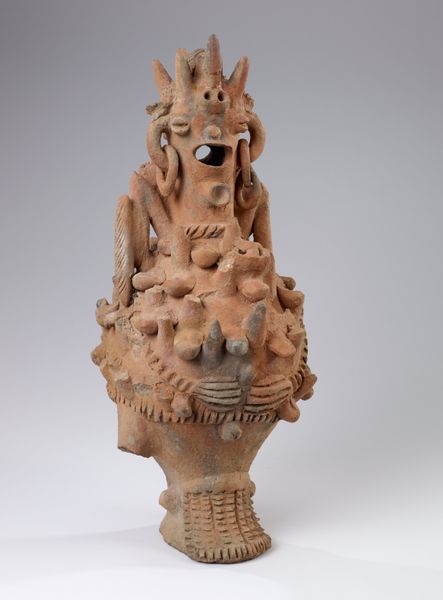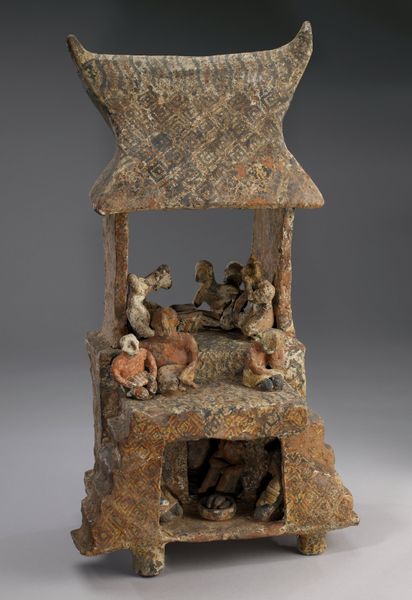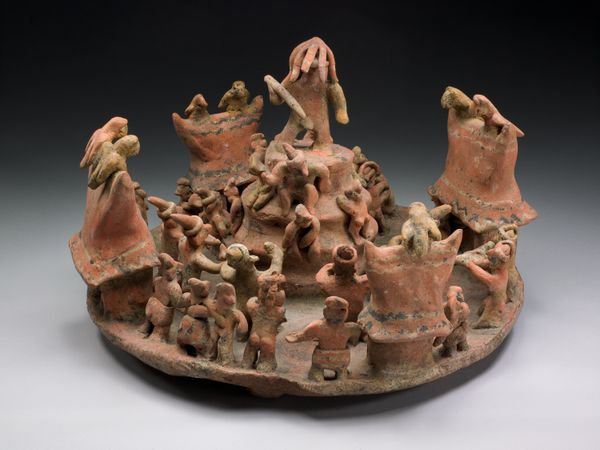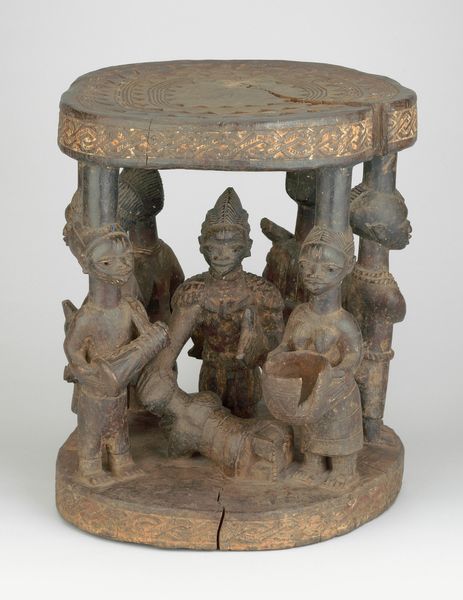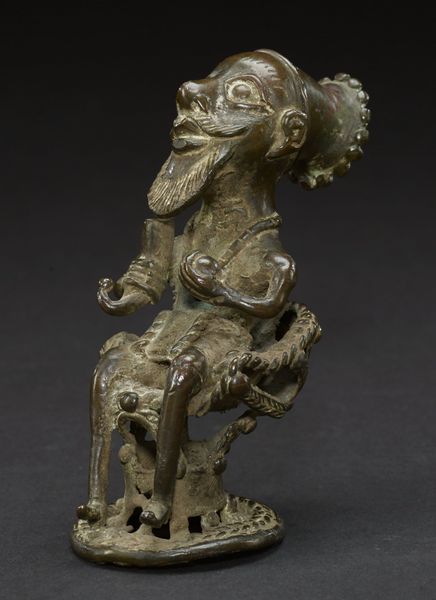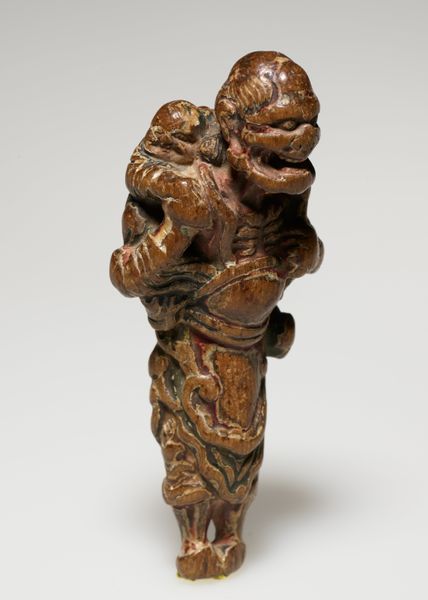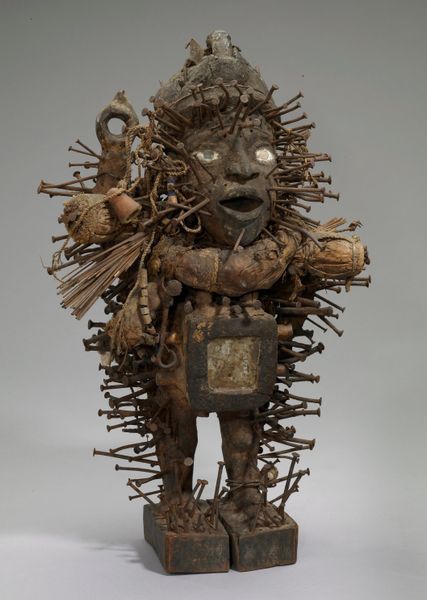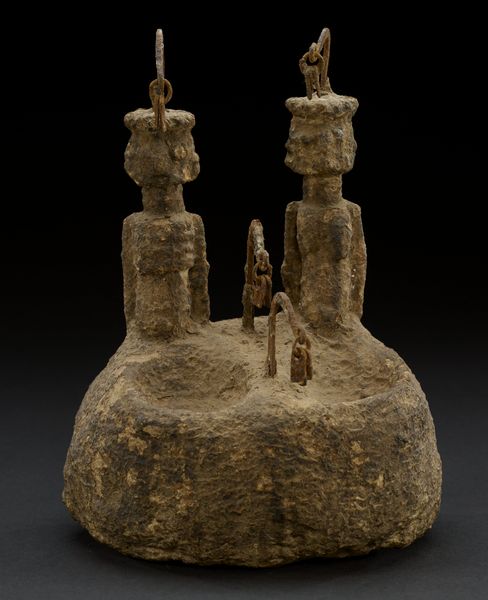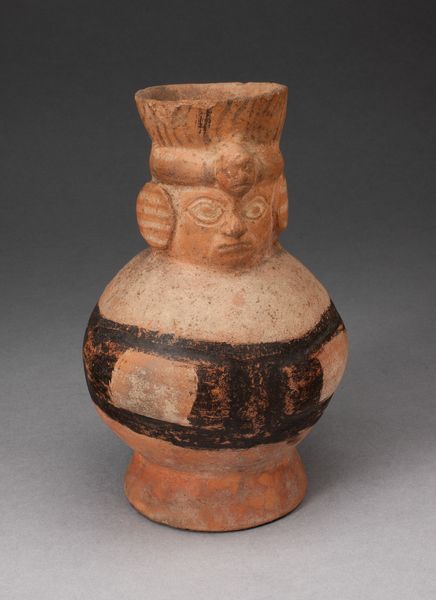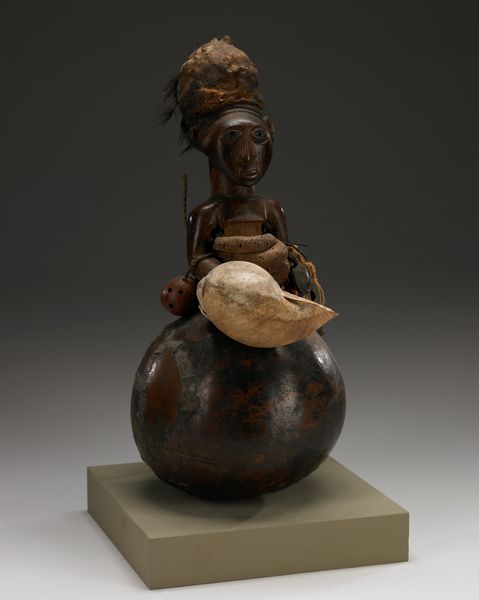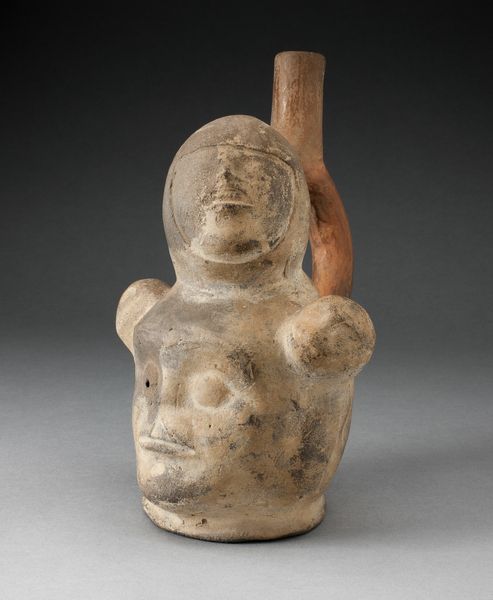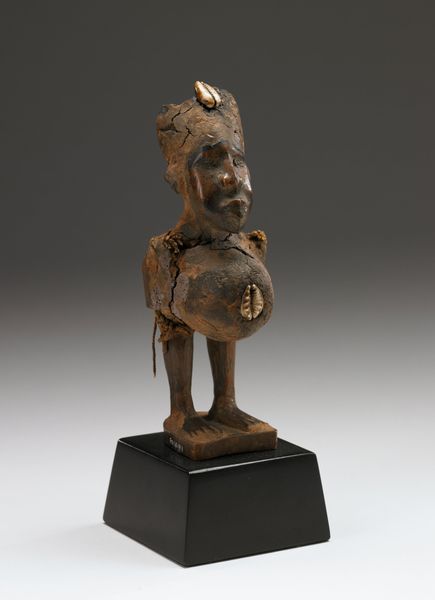
assemblage, sculpture, wood
#
assemblage
#
stone
#
sculpture
#
indigenism
#
figuration
#
sculpture
#
wood
Dimensions: 10-1/2 x 14 x 10 in. (26.7 x 35.6 x 25.4 cm)
Copyright: Public Domain
Curator: Okay, so here we have an extraordinary piece known as a "Power Object (bocio)." It's from the Fon people and its date is unknown, held here at the Minneapolis Institute of Art. You can see it's an assemblage—mostly wood and perhaps stone. What's your initial reaction, Editor? Editor: My first thought? Haunted attic find. It feels intensely layered—in material, and I suspect, in meaning too. There’s a density to the textures. Is that dried mud clinging to the figures? Curator: It could very well be. Bocio figures like this one were meant to embody and manipulate spiritual forces. Each added material, each binding cord, intensified its power. So that accumulated patina speaks volumes, it whispers of intentions. Editor: Intentions… heavy ones, I imagine. Those faces are somber, almost burdened. Is it protection they're offering, or are they guarding something dangerous? The overall form reminds me a bit of a community gathering, yet somehow cloaked in secrecy. Curator: That’s astute. Community plays a vital role. Bocio served as witnesses, absorbing the ills of a family or village. Think of it as a repository, a physical manifestation of collective anxieties and needs. Editor: Like a worry doll, but supersized and… consecrated? You feel the weight of its history, almost a living entity crafted to shoulder unseen burdens. And the textures, deliberately rough hewn—they suggest an urgency to the act of creation itself. Did they believe it could just... stop bad things? Curator: Precisely, it's Indigenism as a style; and I think protection is a large role but also manipulating or diverting that harm is important here. The assemblage aspect makes each Bocio truly unique—it becomes a visual record of needs addressed, of power accrued. Editor: It really brings home how art isn't just about aesthetics, but active belief. You get a visceral sense of ritual—touch, earth, voices, and the artist literally building protection, moment by moment. It’s almost overwhelming when you allow it to absorb into you, what is happening here and where its role has been, a sculpture full of prayers. Curator: And I think, through form and material, reveals much about a specific cultural outlook, connecting our present viewing with the deep past. It represents resilience. Editor: Definitely food for the soul here today, and beyond! It resonates in an intriguing and moving way.
Comments
minneapolisinstituteofart almost 2 years ago
⋮
For the West African Fon people and their neighbors, reality consists of complexly interwoven vital powers that emanate from gods, spirits, and ancestors. Followers of the Vodun religion believe that these sacred forces can be placated, domesticated, and even manipulated through the use of objects. Vodun objects, like this elaborate figure, are often displayed on a small platform in plain view in a public courtyard. They function as temporary abodes of the sacred forces, that ward off evil and provide aid and protection.
Join the conversation
Join millions of artists and users on Artera today and experience the ultimate creative platform.
